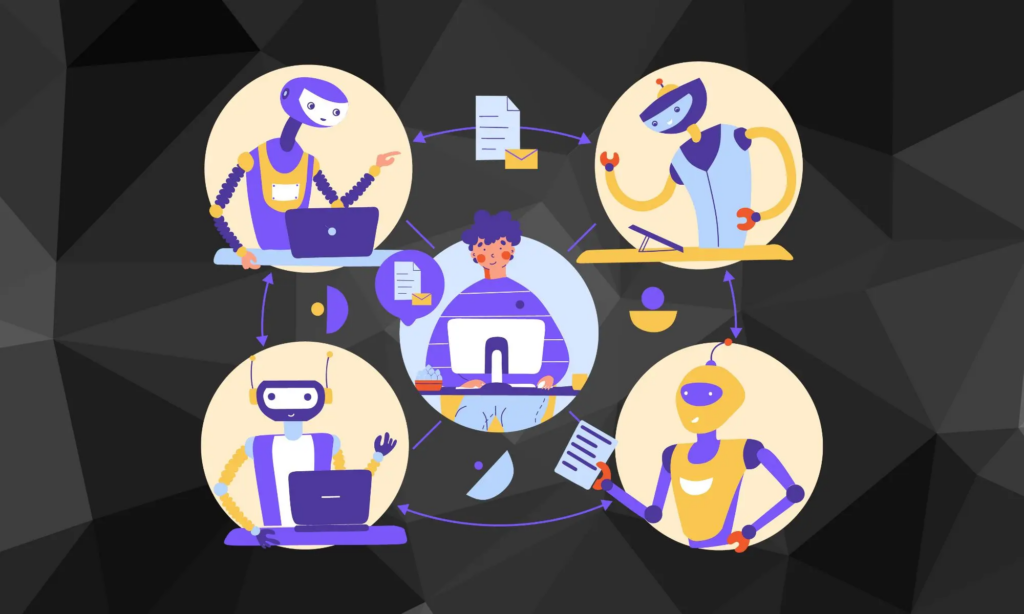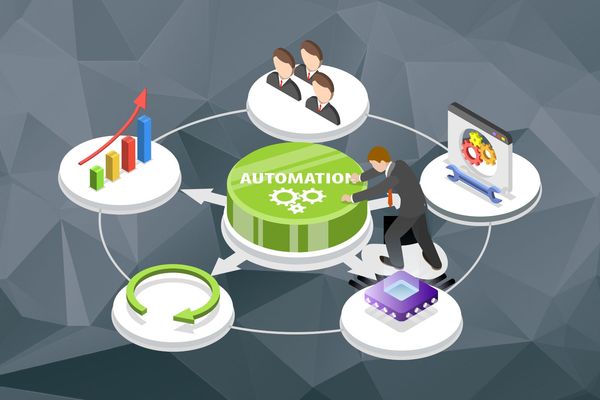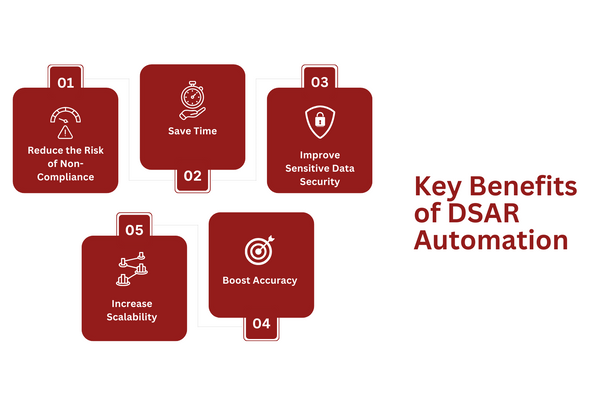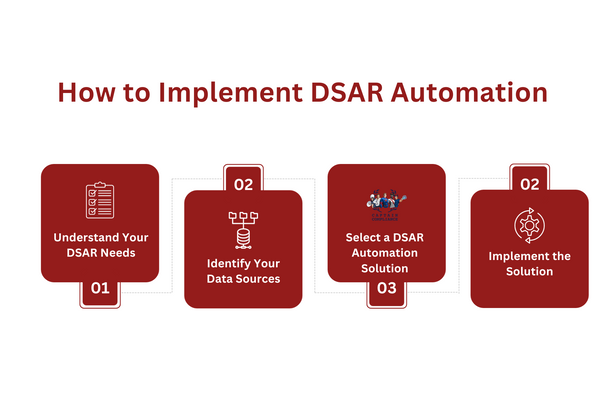
Data Subject Access Requests (DSARs) have become a crucial part of data protection and privacy regulations worldwide. This can be fully automated with our DSR Portal software for end to end automation.
As the DSAR allows individuals to inquire about the personal information that an organization possesses about them, ranging from what type of data is held to how it’s used. However, managing these requests can be time-consuming and complex for businesses. Hence, the need for DSAR Automation comes into play.
DSAR automation refers to using software tools or platforms to handle Data Subject Access Request workflows smoothly and efficiently.
The objective behind using automated systems is not only to speed up the response times but also to ensure accuracy while reducing manual workloads significantly.
In this article, we will discuss more details on DSAR automation, including its benefits and effective implementation strategies.
Let’s dig right in.
Key Takeaways
A DSAR or data subject access request is a request made by the individual to the organization for the personal information the organization is holding about them.
DSAR automation refers to using different software technologies and solutions with which a company can automate the DSAR response process.
Many companies need to handle hundreds of DSAR requests per month, which can be slow to do manually, and they risk errors that can lead to fines and penalties. Automating this process can make the whole process more straightforward.
What ext to use for the data subject request link on my footer?
For a Data Subject Request (DSR) link in your website’s footer, clarity and straightforwardness are key. The text should immediately convey its purpose to the user.
Here are some strong options that are commonly used by our thousands of clients:
-
“Your Privacy Rights”
-
“Privacy Request”
-
“Data Request Form”
-
“Exercise Your Privacy Rights”
-
“Data Subject Request”
The most common and often recommended phrases are “Your Privacy Rights” or “Exercise Your Privacy Rights,” as they are broad enough to cover various requests (access, deletion, correction, opt-out) and clearly signal the link’s purpose to a user concerned about their data.
What is DSAR Automation?

DSAR automation is the process of using technology and software to automate and streamline the data subject access request process.
DSAR (data subject access request) is a request a consumer (data subject) can make to a business to provide any details about the personal information that a business holds about them.
The organization must respond to a DSAR within one calendar month with some opportunities to extend if required. The request can come in any form, including in writing or verbally, as long as it is clear the individual is asking about their personal information.
However, the problem for a business is that they might receive dozens or even hundreds of these requests per month.
According to one poll from 2020, 24% of respondents said they receive 10 to 50 DSAR requests per week, 11% between 100 and 500, and 9% over 500 DSARs each week.
The contents of these DSARS can range from particular (“all emails from ‘this email address’ from ‘date X’ to ‘date Y”) or very broad (“all personal information you have on me”). This creates several problems for the organization, including time, cost, finding the correct data, and accuracy.
DSAR automation serves to help businesses better manage and respond to data subject access requests while ensuring the data they provide to consumers is accurate and up-to-date. This can be done using DSAR software.
Key Benefits of DSAR Automation

Processing DSARs regularly require training and plenty of resources, and it can be tedious. Not to mention, the possibility of error is high.
This is why DSAR automation, whether it’s fixed, flexible, process, programmatic, or RPA (robotic process automation), is becoming so important for organizations.
Here are five benefits of automating your DSAR processes:
Reduce the Risk of Non-Compliance
Non-compliance with DSAR requirements will lead your business to huge financial risk since it exposes it to regulatory fines and penalties, along with potential legal action from the data subject(s).
By automating its processes, DSAR will no longer be a potential problem for your business, and it can more or less run on auto-pilot instead, with less fear of errors.
Save Time
In one Gartner survey, more than two-thirds of respondents out of 698 said they needed two or more weeks to respond to just one DSAR.
Why do they take that long?
It’s not because they’re lazy or anything. It’s because fulfilling these requests consists of multiple smaller tasks, such as authenticating data subjects or finding where the data is stored. It often takes 50 emails to complete one DSAR.
Each task takes time to fulfill, which only builds up, increasing the total time needed to complete a DSAR request. This is why DSAR automation can help your organization save time, for example, by introducing 2FA (two-factor authentication), among other things.
Improve Sensitive Data Security
In 2022, 31% of all reported data breaches were caused by insider threats, that is, employees or contractors.
DSAR requests carry with them a significant risk of a data leak or handing someone’s sensitive data to the wrong person.
This is why it’s important to encrypt the data between the data subject requesting the data and the business providing the data. One way to do this is through a secure and private email like Mailfence.
Boost Accuracy
Humans make mistakes on the simplest tasks, and conducting a DSAR is anything but simple.
By automating DSARs, your team can improve DSAR accuracy and ensure it becomes less prone to errors.
Increase Scalability
While you might be able to handle a few DSAR requests per week manually, as your organization grows and you receive more and more of these, doing DSARs manually will become unpractical.
Automating DSAR responses will instead improve your scalability and allow you to handle hundreds of them if necessary.
How to Implement DSAR Automation

So, how do you implement DSAR automation in your organization? Here’s how you do it:
Understand Your DSAR Needs
The first step in implementing DSAR automation is to understand your DSAR needs.
How many DSAR requests are you receiving now? Will this increase soon? Are these requests specific or broad? What does manually fulfilling DSARs cost you?
You have to answer all of these questions before you can even start looking for a DSAR automation solution for your business.
Identify Your Data Sources
Where do you store your customers’ data? Do you have a single or multiple data sources?
Are you storing it in a data table, object, or another storage format? Do you have a customer database, CRM system, or a marketing automation platform? Are there third parties that store your customer’s data?
The more data sources you need to go through, the more important crafting a robust data mapping strategy becomes.
Select a DSAR Automation Solution
Steps 1 and 2 will help you make the right choice in step 3 here and go for a DSAR automation solution that’s a good fit for your business.
This will, of course, depend on your organization’s needs and budget.
However, there are still some universal things to look out for in a DSAR solution. Here are some of the following features that would benefit your business:
Automated data collection
Ability to redact and delete data
Exhaustive search capabilities
Robust security
Integration with systems you already use
User-friendly
Compliance with data privacy laws
Implement the Solution
When finally implementing a DSAR automation solution, don’t go all-in at once. Instead, implement it in increments, starting with a specific data source or type of DSAR request that you know you get the most often.
From there, you can scale the solution to include other data sources and DSAR types.
Make sure also that everyone in your organization understands the importance of fulfilling DSARs. While this is “officially” the domain of a data protection officer (DPO), they can’t do this without the full support of others.
Training employees, especially DPOs, in the use of DSAR automation solutions is also important. Your DPO is already busy enough as it is, so help them by training them in the use of these tools. Or, if you don’t have the capacity for this, you can always hire a DPOaaS.
Finally, be sure to monitor and review the performance of the automation solution regularly and, if necessary, make adjustments. You may even find out that you picked the wrong solution for your company.
DSAR Fines for GDPR and CCPA
Earlier in June this year, the Swedish Authority for Privacy Protection (Integritetsskyddsmyndigheten, IMY) fined Spotify €5 million for unclear DSAR responses.
Failing to provide a clear response to DSAR or not responding to a request for it at all is one of the biggest non-compliance offenses under both GDPR and CCPA.
Under the General Data Protection Regulation in the EU, this can lead to a fine of up to €20,000,000 or 4% of the global turnover for the last year for major violations or up to €10,000,000 or 2% of the global turnover for the previous year for minor violations.
The CCPA fines for non-compliance are $2,500 for each unintentional and $7,500 for intentional, or a violation that involves children (plus the fines can stack).
Closing
The ability to maintain data privacy regulations compliance is a major challenge today for any business.
Responding to data subject access requests or DSARs has a vital role in staying compliant, but the process itself can be difficult and time-consuming.
Your businesses can receive hundreds of DSAR requests in a week or months, and DSAR automation can make the process much more straightforward. Luckily, our DSAR solution at Captain Compliance can help you out.
Find out how we can help you stay compliant with data privacy laws. Get in touch with us today.
FAQs
What is DSAR automation?
DSAR automation refers to the use of software and technology to automate the process of responding to data subject access requests.
Learn more about what a DSAR is.
What is a DSAR process?
DSAR process is a request made by an individual or data subject to an organization to access his or her data the organization is holding.
Read this article to better understand what a DSAR is.
What does DSAR stand for?
DSAR stands for data subject access request. This is a written or verbal request made by the customer or data subject for the organization to provide them access to the personal information they are holding about them.
Here are the best DSAR solutions for automating the process.
What is an example of a DSAR?
Here’s a simple example of a DSAR request:
Dear [Company Name]
I am writing to request access to the personal data that you hold about me, following Article 15 GDPR and the Right of Access by the data subject.
I am interested in the following information:
All personal information that can be used to identify me (name, address, phone number, email address, etc.)
Categories of recipients you have shared or disclosed my data with or intend to
The purposes for processing my data
Thank you in advance for your prompt response.
Sincerely,
[Name]
Here’s what you need to know about SAR requests.
How do I make a DSAR?
There is no single way to send DSAR requests. It can be made in any format (text, audio, video), on paper, or electronically (via email or social media post, for instance).
However, for posterity, it is best if you use a simple Word or Google Docs file that you can save on your computer and easily access.
The request itself need not be overly complicated. All it needs to include is what information you are requesting, your name, and where the information should be delivered (your email address or home address, for example).
What are data privacy and compliance services, and how can they protect your business and customers?